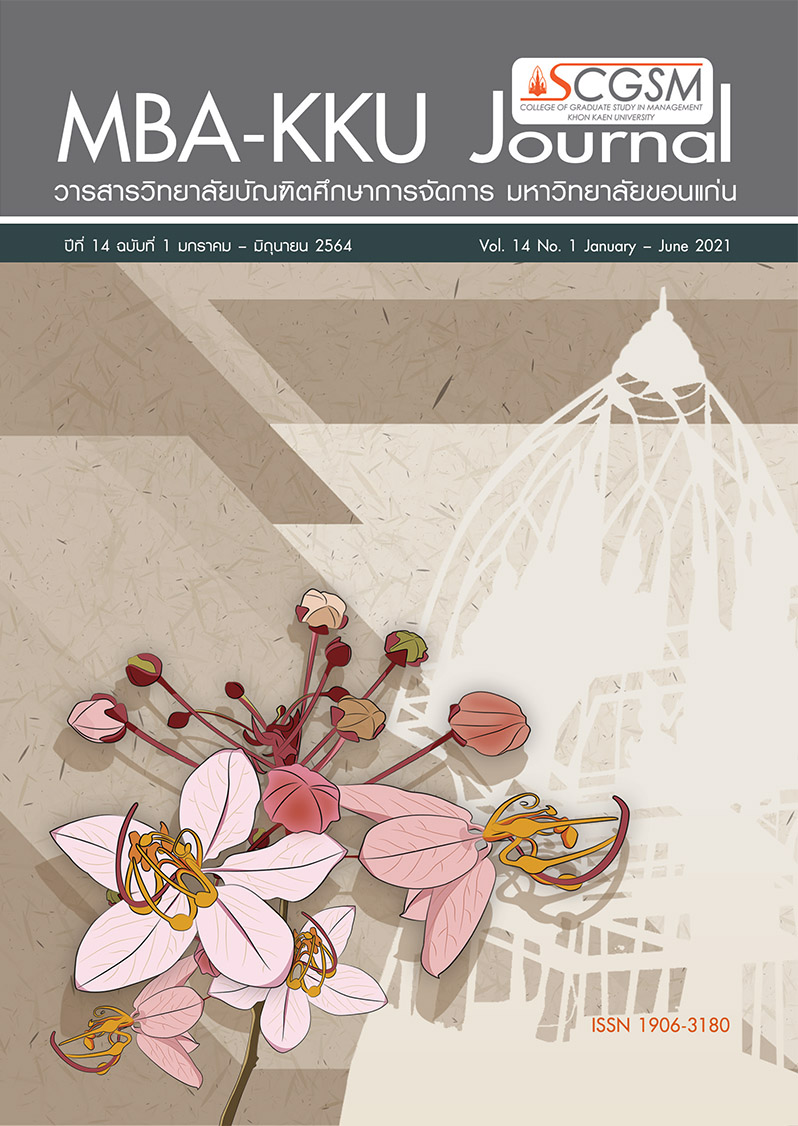The Perceived Quality of Services of the Passengers: A Case Study of Bangkok Airways Domestic Flights
Main Article Content
Abstract
This study examines the perceived quality of services provided by Bangkok Airways. The study’s sample group, which was obtained through a convenience sampling selection method, was 400 domestic passengers receiving services from Bangkok Airways. The research tool was a questionnaire which was checked for validity, reliability, and research ethics by experts. The statistical data and techniques for data analysis used in this study included percentages, means, standard deviations, Fisher’s least significant difference, and Tukey’s multiple comparison test. An inferential statistics test, One-way ANOVA, was used for hypothesis testing. The results showed that passengers’ demographic information (i.e., gender, age, occupation, and the frequency of the passengers’ service usage) statically influenced their satisfaction with Bangkok Airways’ services at the significant level of 0.05. The findings indicated that the two most important factors impacting the perceived quality of Bangkok Airways’ services were (1) the delivery time of checked baggage (97.0%) and (2) the comfort of the seats (95.3%). The least important factor was the flight attendants’ uniforms (66.5%).
Article Details

This work is licensed under a Creative Commons Attribution-NonCommercial-NoDerivatives 4.0 International License.
- The ideas and opinions expressed in MBA-KKU Journal are those of the authors and not necessarily those of the editor.
- Copyright on any open access article in a journal published by MBA-KKU Journal
References
Andreas H., Z. (2001). Relative attitudes and commitment in customer loyalty models: Some experiences in the commercial airline industry. International Journal of Service Industry Management, (3), 269.
Anongnat Tha-inta. (2012) Factors affecting consumer decision making in using Low-Cost airline services. Research in problem solving current economics issues, Economic Faculty, Chiang Mai University.
Chakgrit Podapol, (2020). The parental satisfaction toward basic education school administration in the nakronhong quality group under loei primary educational service area office 1, Mahamakut Buddhist University.
Hirmukhe, J., (2012). Measuring Internal Customers’ Perception on Service Quality using SERVQUAL in Administrative Services. International Journal of Scientific and Research Publications, 2(3), 1 – 6.
Inthira Chantarat. (2009). Customer’s Expectation and Perception toward Service Quality on a Low Cost Airline for Domestic Flight. Master’s Project. M.B.A. (Management). Bangkok: Graduate School, Srinakarinwirot University.
Kalaya Wanichbancha. (2003). Advanced statistical analysis with SPSS for Windows. Bangkok: Cula Book.
Karn Phatthar Kankaew. (2012). Passenger’s expectation and satisfaction on airlines delivering services. Study of factors influencing the satisfaction of low-cost airlines, a case study of Thai Lion Air, Suan Sunandha Rajabhat University.
Parasuraman AP, Zeithaml V, Berry L.A., (1985). Conceptual Model of Service Quality and its Implication for Future Research (SERVQUAL) :41-50.
Saha, G. C., & Theingi. (2009). Service quality, satisfaction, and behavioural intentions: A study of; cost airline carriers in Thailand. Managing Service Quality: An International Journal, (3), 350.
Saleem, M. A., Zahra, S., & Yaseen, A. (2017). Impact of service quality and trust on repurchase intentions – the case of Pakistan airline industry. Asia Pacific Journal of Marketing & Logistics, 29(5), 1136.
Theeraphan Sa-nguanwong, Pornchai Eua-aree, Poonpat Chomjit, Bongkotrat Piamsirikamol, and Weerachai Boonyapattanapong (2018) The Service Quality Perception of Domestic Passenger at Check-in Counter of Nok Air at Phuket Station. PULINET Journal, 5(1),69-81.
Vasut Chotipanich. (2017). Impact of Service Quality, Perceived Value and Brand Image on Re-service Intention in Context of Full-service Airlines. Independent study, Graduate School, Bangkok University.


